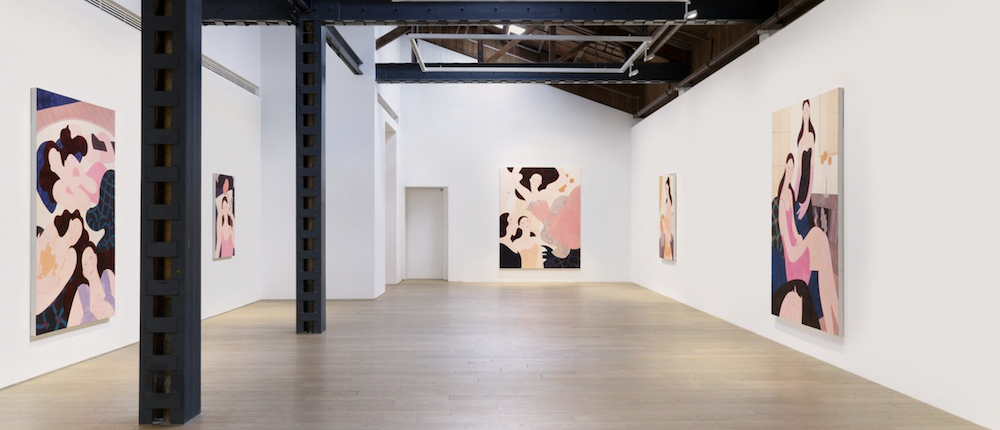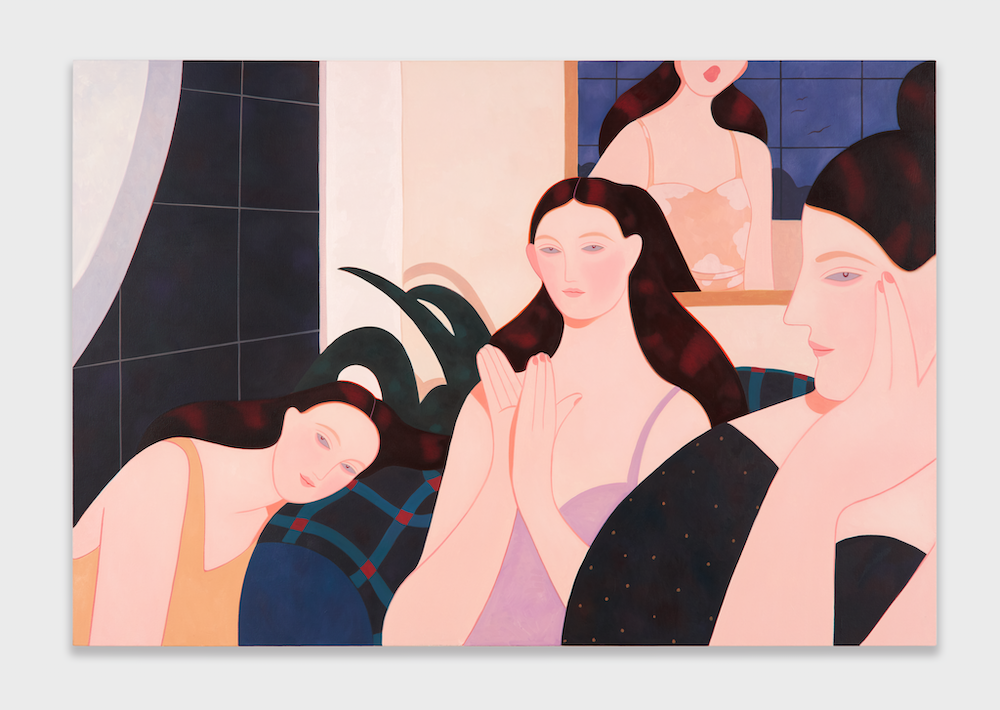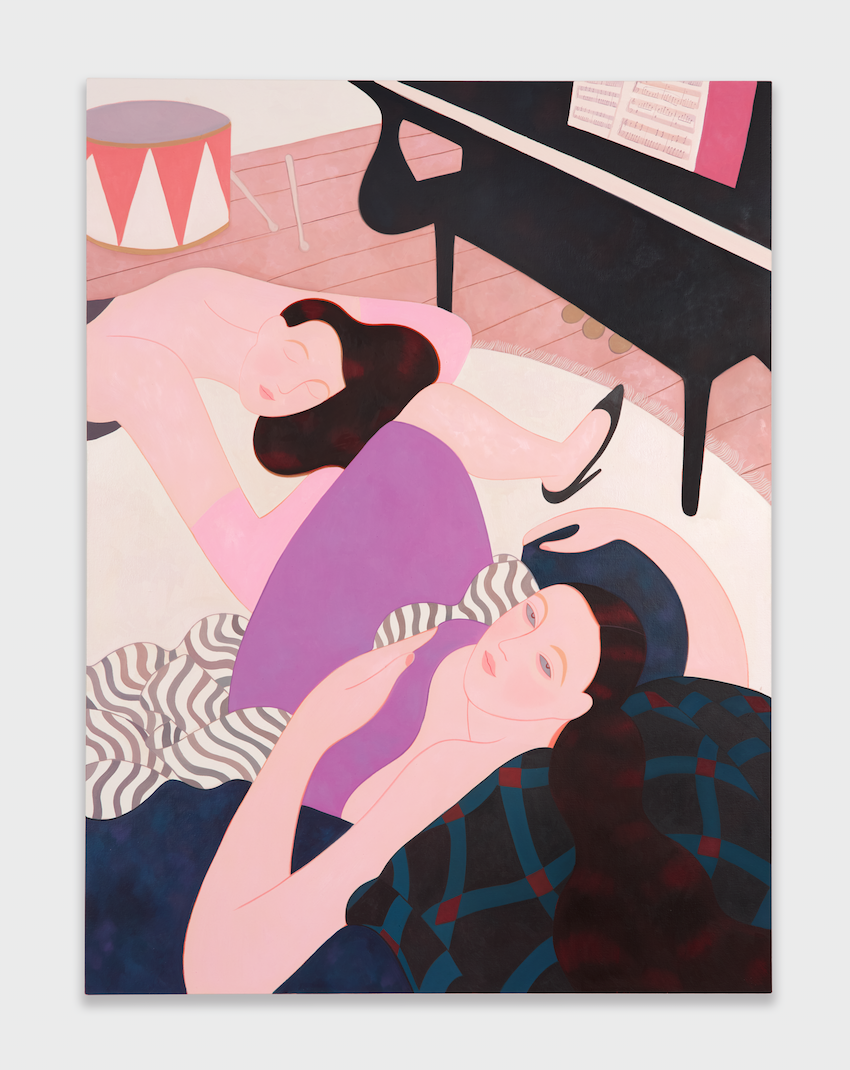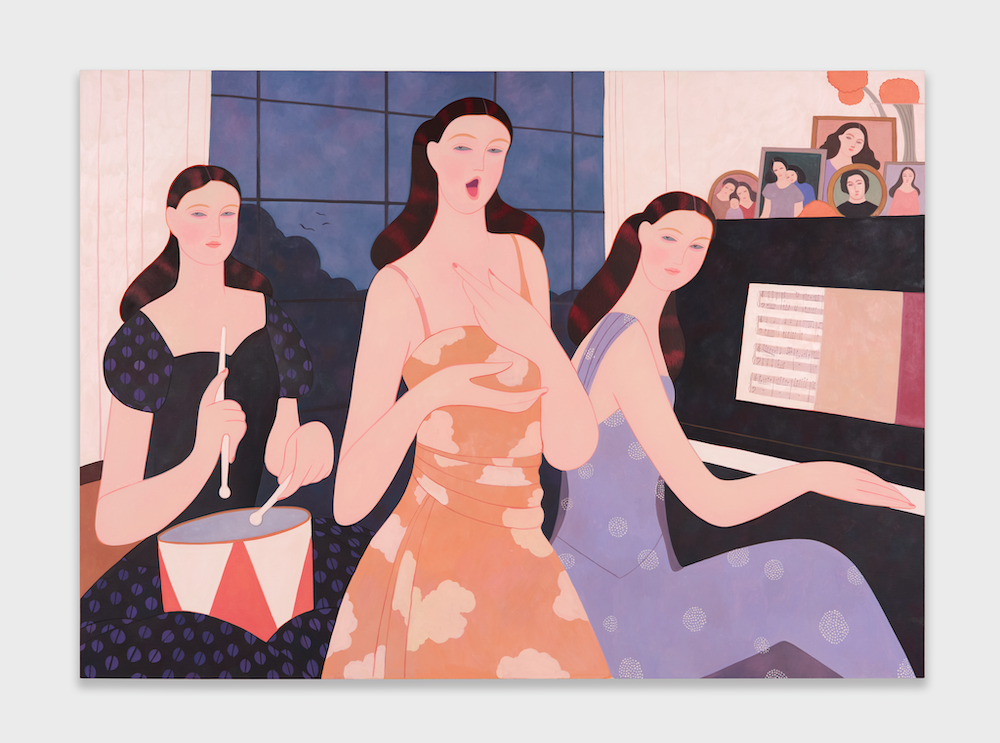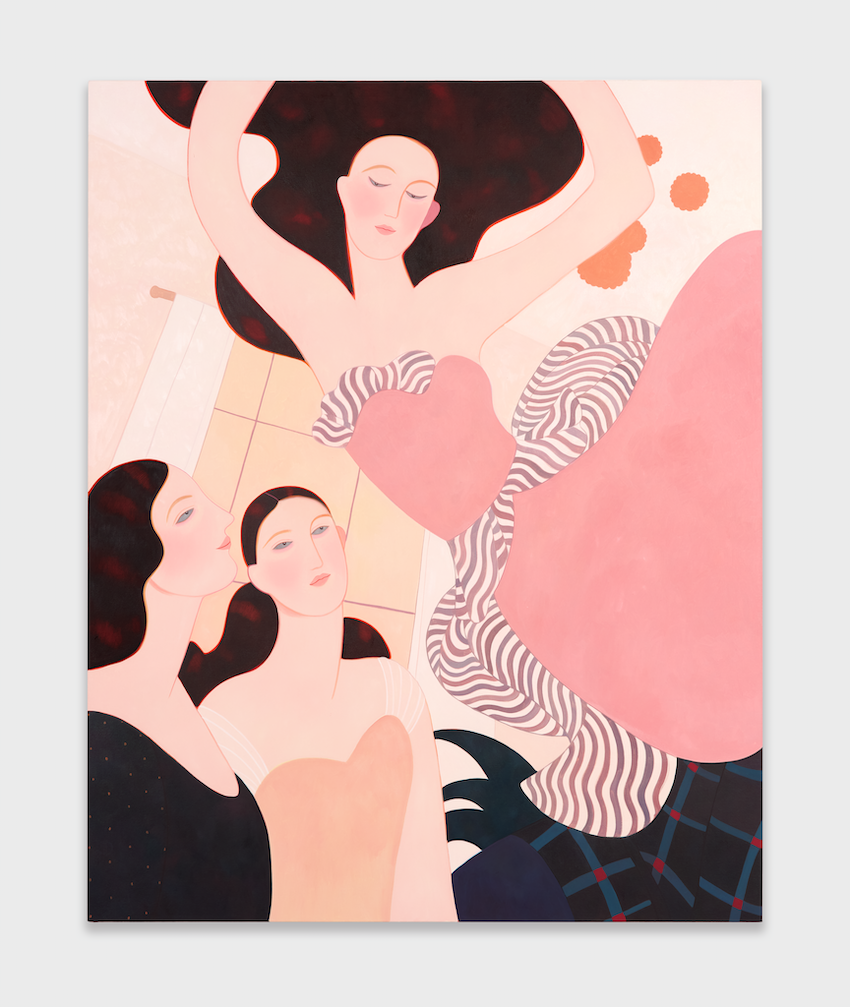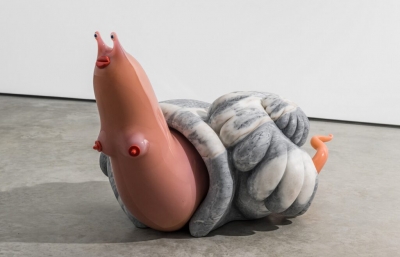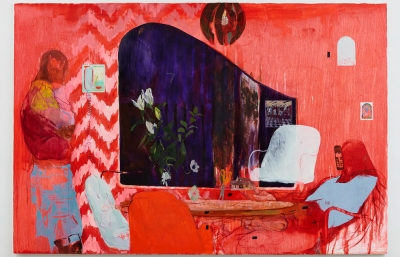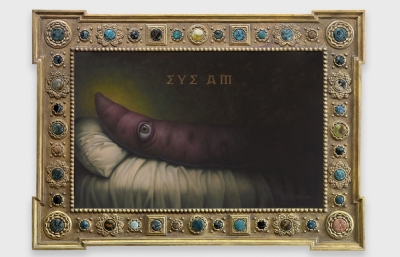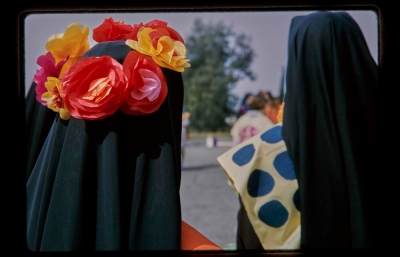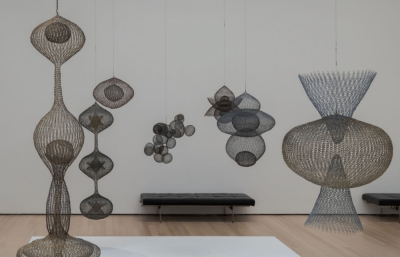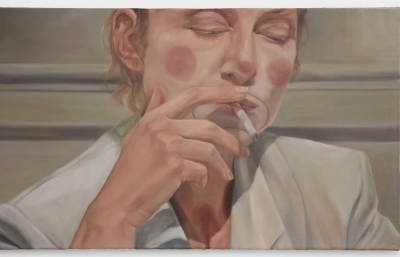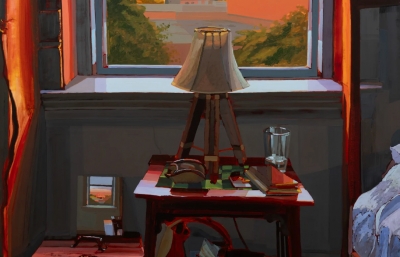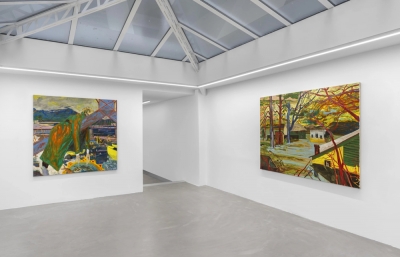Perrotin Shanghai is pleased to present Invitation, former cover artist Kelly Beeman’s first solo exhibition in China. In her Brooklyn studio, illuminated by the morning sun, Kelly Beeman lingered among her canvases, adding a final touch here and adjusting a line there, as if trying to become part of the painted world she had created in the eleven works for her first solo exhibition at Perrotin Shanghai. Unlike many artists who enjoy working in the silence of night, drawing inspiration from its mystic darkness, Beeman calls herself an “early bird.” She prefers to spend time with her paintings in bright daylight—a preference that shimmers in the warm tones radiating from her canvases and in the relaxed expressions of her sunlit protagonists. Here, brightness also becomes a door into Beeman’s artistic world. At this moment, the artist stands behind that door, like a gracious hostess restlessly awaiting the arrival of her guests, inspecting every last detail of the arrangement before it opens.
As the guests begin to pour in, we—the viewers—are immediately immersed in a world of serenity inhabited by Beeman’s female protagonists. Singing, playing the piano, dancing, or quietly chatting, the often oversized canvases are alive with activity. At the center of the exhibition is The Performance: one girl sings, her mouth forming a perfect “O”; another turns from the piano to face the viewer, an enchanting smile on her face; a third, seated at the drums, keeps the beat with ease, fully absorbed in the rhythm. Perhaps this ensemble is performing a siren song—hypnotic, tragic, and undeniably infectious. The guests are drawn in by their performance. Where they once chatted (The Conversation), danced (The Dancing Hostess), and applauded (The Applause), they now begin to fall asleep (Sleep Spell).
As the paintings flow fluidly from one to the next, a sequence of events unfolds before the viewer, not through rational logic but through a progression that leads into a world of magic and dreams. But what kind of dreams? A closer look reveals the recurring presence of marigold flowers across many of the works. They appear atop the piano, in vases, on tables, and even lend their name to the title of one painting. Often associated with honoring the dead and commemoration, marigolds in Beeman’s work suggest transformation—one phase of life coming to an end and another beginning. This sense of continual change is central: everything is in transition, both around us and within us. As time moves forward, nothing remains fixed.
The paintings may be interpreted as visual meditations on temporal progression, with recurring motifs such as the shifting light in the windows serving as subtle markers of time’s passage. This element is as significant as the marigolds, both symbolizing transformation and continuity. Moreover, the possibility of reading the narrative either forward or backward suggests a fluid, non-linear conception of time. This temporal ambiguity, particularly the sense of time moving in reverse, introduces a compelling existential dimension to the viewing experience. In Ascension #1 and Ascension #2, the women appear to float mid-air, as the paintings celebrate the inherent promise, freedom, and possibility that can arise from the metaphorical “deaths” we experience throughout life. These scenes clearly do not belong to the present moment; rather they inhabit a dreamlike realm of the subconscious.
Surrounded by the eleven paintings installed in the gallery, Beeman invites viewers into an immersive experience within her carefully staged world. As they move through the space, viewers shift their bodily engagement—changing angles and perspectives while navigating the arrangement of the works. The artist encourages the formation of free associations between paintings, prompting the invention of new plots and storylines. The essence of this journey is, in a sense, existential. Here, time folds backward and forward, guiding us to confront the striking marigolds held in the hands of youth and beauty. This symbol evokes both life and death, oblivion and remembrance, and the passage of time, where bittersweet memories linger and endure. —Kaimei Wang



